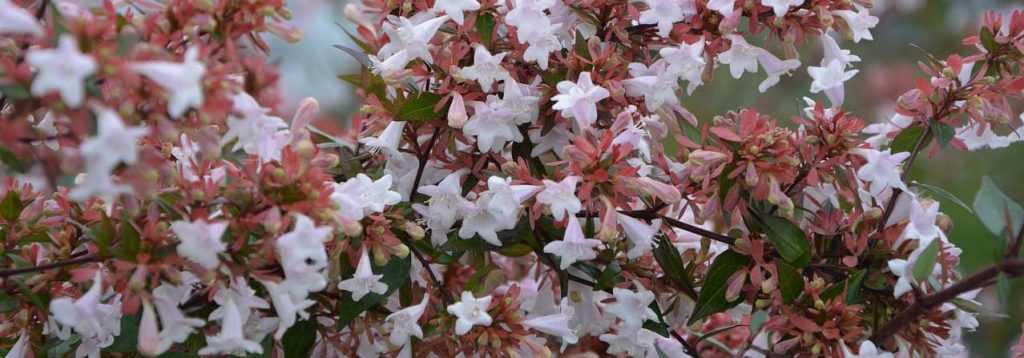
Abelia: Planting, Pruning and Care
A floriferous bush that's easy to grow
Contents
The Abelia is a small bush with abundant summer flowering and decorative foliage. Hardy down to -10°C to -15°C, it deserves a place in all gardens with mild winters.
From Abelia grandiflora ‘Kaleidoscope’ to Abelia triflora, including Abelia x grandiflora ‘Edward Goucher’ and ‘Prostrata’, all are easy to grow in full sun or partial shade, in any well-drained soil and sheltered from icy winds. Low-maintenance, resistant to diseases as well as urban pollution, the Abelia requires little care.
Discover how to plant it successfully, when and how to prune it – here are all our secrets for maintaining this beautiful summer-flowering bush.
Planting: Where, When and How
- Where to plant Abelia?
Hardy down to -10/-15°C, Abelia is best planted in regions south of the Loire with relatively mild and not too long winters.
Its excellent resistance to sea spray means it’s frequently found in gardens along the Breton coast and Atlantic shoreline. Give it a sunny position, well sheltered from cold, dry winds which can damage its flowering, especially when young. It will also tolerate partial shade.
Easy to grow, it’s not fussy about soil type and thrives in any good, well-drained garden soil, even chalky ground. However, it dislikes heavy, compacted or waterlogged soils. When young, it prefers soils that remain moist, but as it matures it will tolerate occasional summer drought.
Often wider than tall (60cm to 3m high and 60cm to 2m wide), Abelia is versatile in the garden: as a specimen plant, in free-flowering or clipped hedges, in perennial borders or with other bushes, as ground cover, and even in pots for smaller varieties – perfect for patios or balconies where you can enjoy its jasmine-like fragrance on summer evenings.
-
When to plant?
Autumn planting encourages root establishment before winter. Abelia is best planted in autumn, particularly October, but can reasonably be planted from February to May, avoiding periods of severe frost or drought.
-
How to plant Abelia?
As Abelias are small bushes, space plants 60cm to 1.2m apart. Staking isn’t necessary.
- Soak the rootball by immersing it in water for 15 minutes
- Dig a hole 3 times wider than the rootball and about 50cm deep with a spade
- Remove stones, roots and weeds
- Loosen the soil well
- Create a small mound at the base of the hole with some excavated soil to support the bush’s roots
- Mix in equal parts with compost
- Add a good layer of gravel for perfect drainage, especially if your soil is heavy
- Position the Abelia in the centre of the hole with the collar at soil level, adjusting the height
- Backfill, firming soil around the roots to eliminate air pockets
- Fill the hole while keeping the bush upright
- Firm with your foot
- Water thoroughly after planting and weekly during hot weather in the first year
-
Growing Abelia in pots
To grow this beautiful bush in containers:
Pruning the Abelia
A simple annual pruning with hedge trimmers or shears will suffice for this summer-flowering bush. It can be easily shaped as desired, making it ideal for clipped hedges.
Pruning helps maintain a neat, compact and balanced habit, promotes growth and stimulates abundant flowering. Always prune after flowering, in late winter between February and April, before new growth begins:
- Using secateurs, remove at their base any frost-damaged tips, crossing, thin or dead branches, keeping only the most vigorous ones
- You can also thin out the branches to allow light to reach the centre of the bush
Discover other Abelia
View all →Available in 2 sizes
Available in 1 sizes
Available in 3 sizes
Available in 1 sizes
Available in 2 sizes
Available in 1 sizes
Available in 1 sizes
Available in 1 sizes
Available in 1 sizes
Available in 1 sizes
Maintaining Your Abelia
Abelia is an undemanding bush, easy to maintain. Never ill, it is unaffected by most diseases or parasitic attacks. It just needs a little attention when young, during the first three years after planting.
- “Youthful” watering
In case of prolonged drought, and during the first two or three years, monitor your bush’s water needs and water regularly in summer. Then, as it ages, it will tolerate temporarily dry soil better and better.
- Good winter mulching
In its early youth, Abelia’s roots are sensitive to frost. It’s best to mulch the base generously before winter for the first 3 years after planting. It will toughen up over winters. A thick organic mulch (at least 8 cm of bark, pine needles…) around the bush’s base is strongly recommended for the first winters or during exceptional cold.
- Winter fleece?
If your Abelia might suffer from cold, sharp draughts, especially in regions where its hardiness may be borderline, it’s better to protect its aerial parts with winter fleece throughout winter.
- Subscribe!
- Contents


































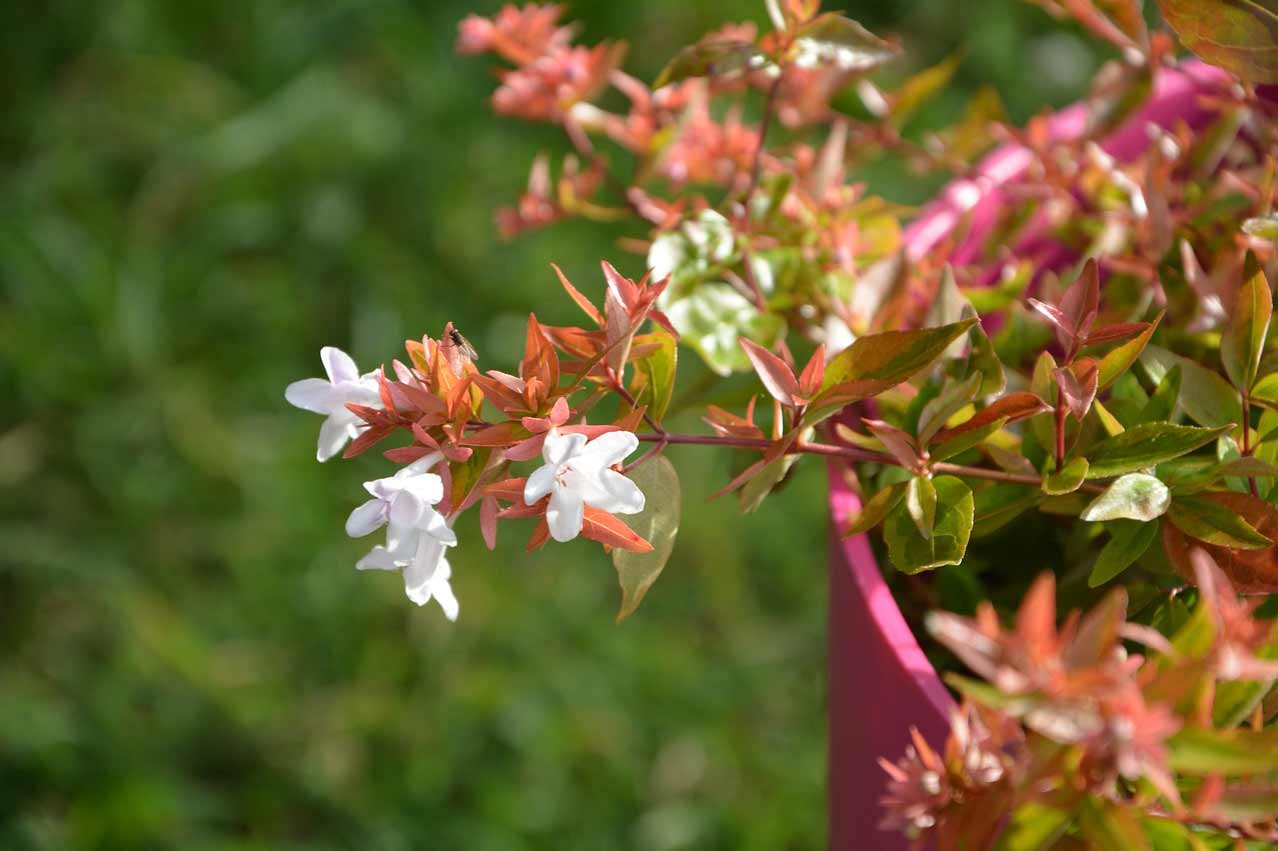
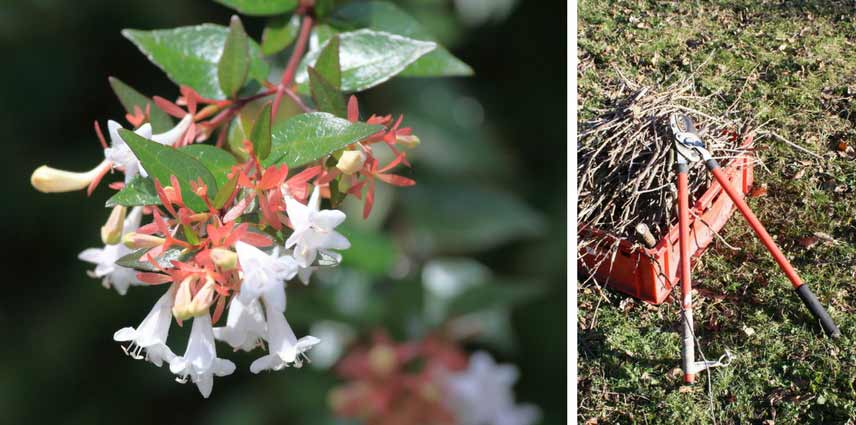
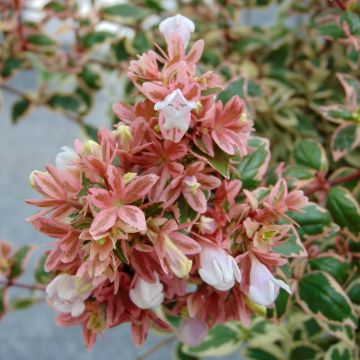
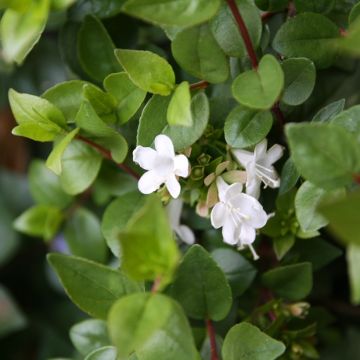
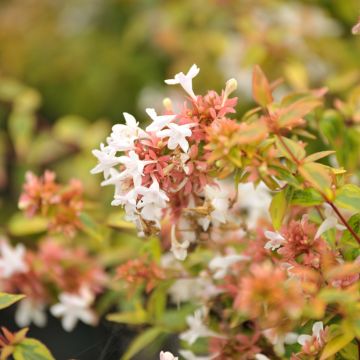
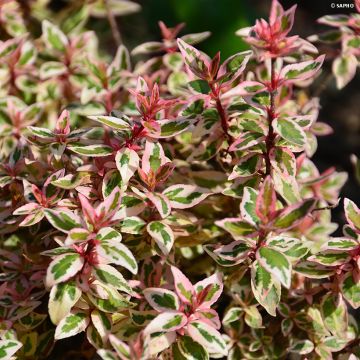
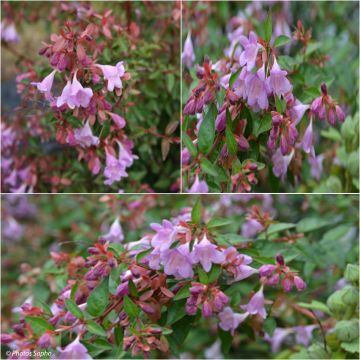
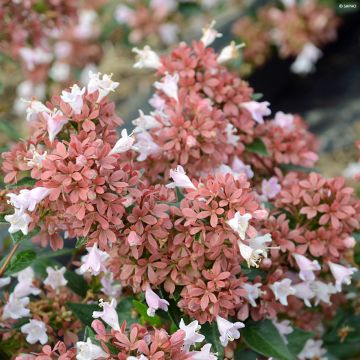
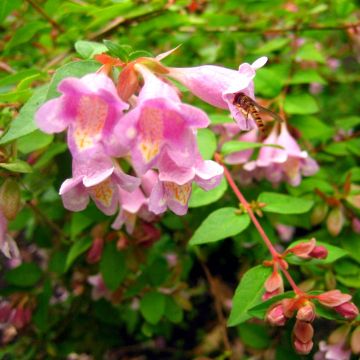
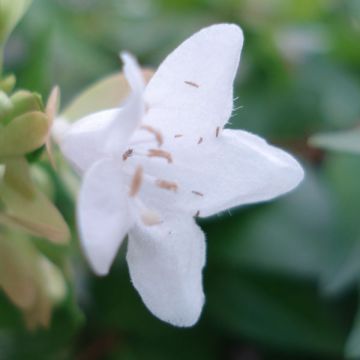
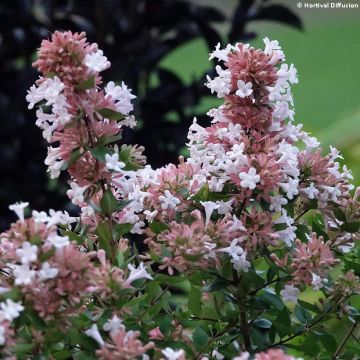
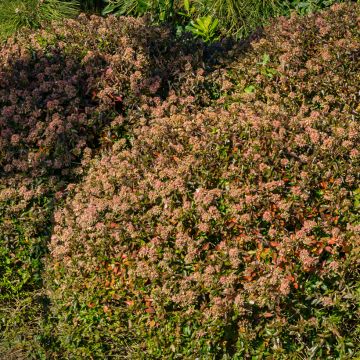
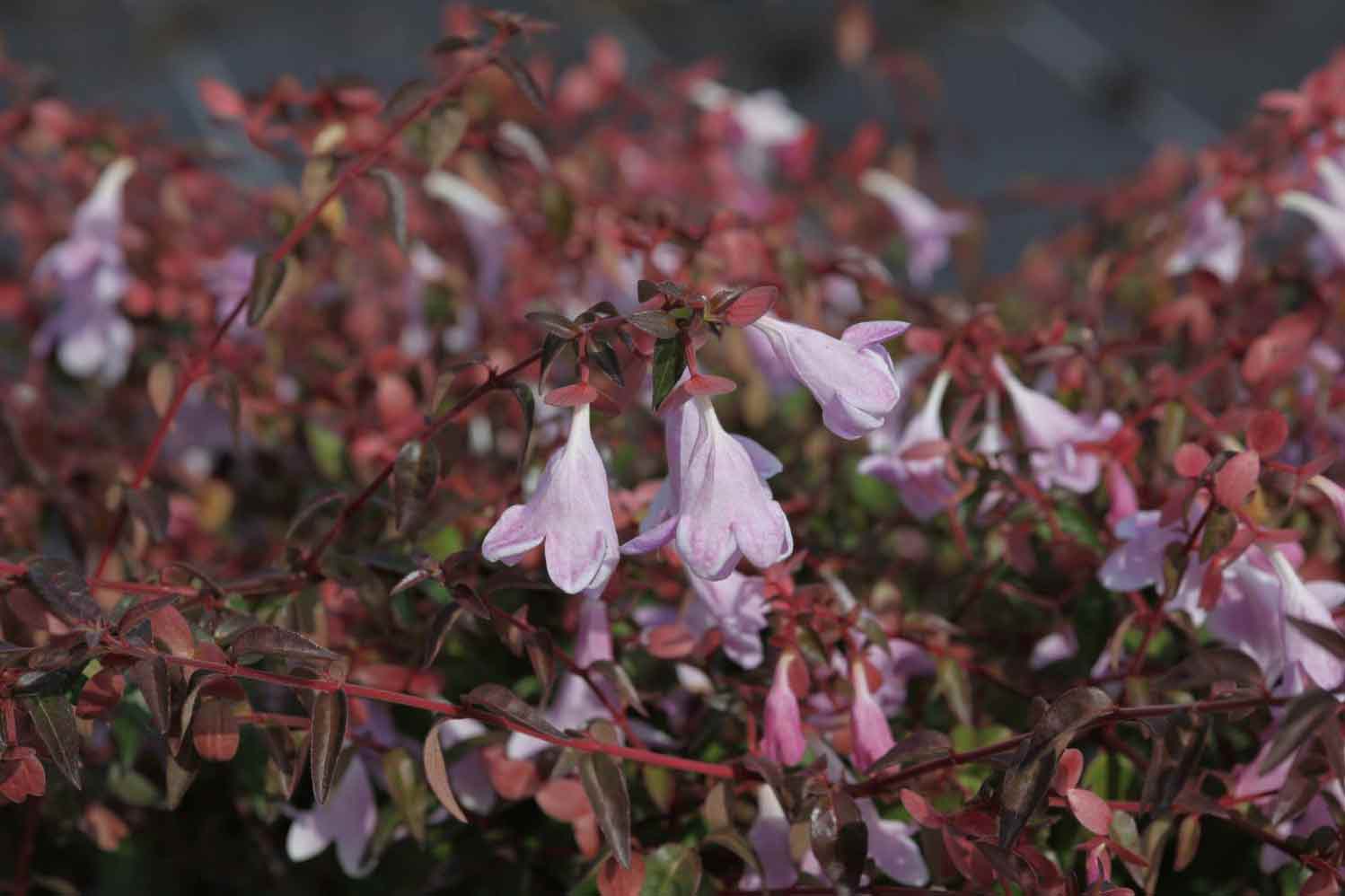
Comments